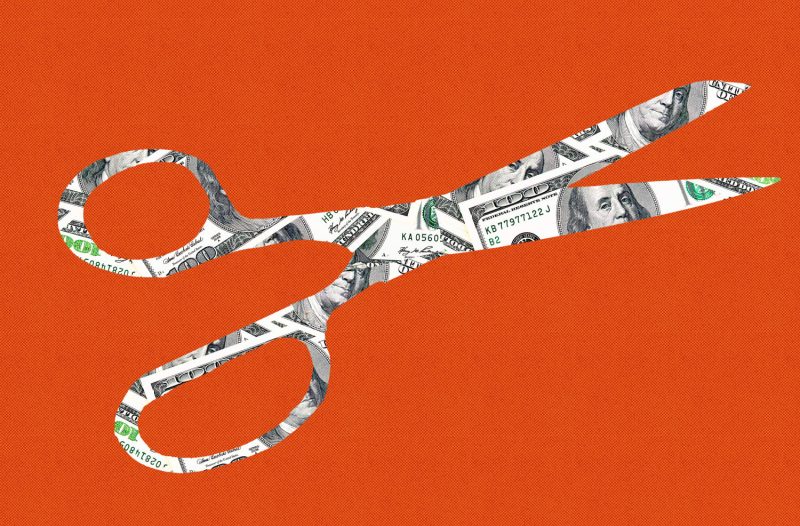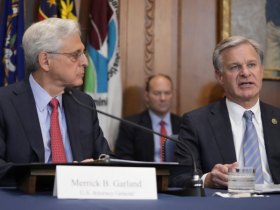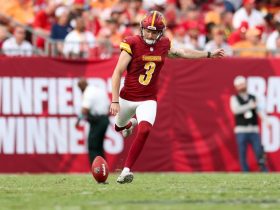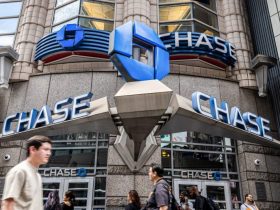The Federal Reserve is gearing up to cut interest rates as soon as next month, which could bring relief to people with mortgages, credit cards and car loans. But it could be a bumpy ride until then.
A weaker-than-expected jobs report Friday triggered a sell-off on Wall Street this week from which markets are struggling to recover. And there’s still uncertainty around how deeply the central bank might slash rates, if it does so as expected when it meets in mid-September. Many consumers are looking for some financial stability in the short term while planning to benefit from lower borrowing costs in the medium to long terms.
That balancing act isn’t easy, Bankrate senior economic analyst Mark Hamrick acknowledged. “We should hope for the best,” he said, but “prepare for some possible outcomes that are less than optimal.”
Here are some financial do’s and don’ts experts suggest in the meantime.
Now’s still a good time to stash money in accounts paying generous interest.
“Circumstances can occur that are damaging to our personal finances, outside of recessions” or stock market turbulence, said Hamrick, who noted that nearly 60% of U.S. adults are uncomfortable with their current emergency savings. “How we prepare for those things, including how much savings we’re either inclined to or able to put away, are ultimately what helps us to manage through those difficulties.”
Most analysts don’t expect the Fed to cut its benchmark rate more than 0.5 percentage points initially. That means high-yield savings accounts — for which some of the best rates top out at 5.35% — are likely to remain appealing.
Certificates of deposit — fixed-rate bank accounts with term limits — are a go-to when interest rates are high. Some are paying interest at levels that rival those of high-yield savings accounts, and it may seem smart to lock in a 5% yield for many months after the Fed starts lowering rates. But several experts cautioned against over-relying on high-yield CDs.
If you’re close to retirement or have a fixed income, a short-term CD of a year or two might be an “attractive option” to take advantage of interest rates, said Rodney Lake, director of the GW Investment Institute at the George Washington University School of Business.
But “you really have to factor in your time horizon,” he said, because much longer than that could mean lost opportunities to reinvest those funds elsewhere with higher returns.
In addition, cashing out a CD early usually entails a penalty. So “if there’s any chance you might need it, buyer beware,” said Laura Veldkamp, a finance professor at Columbia University’s Graduate School of Business.
Now’s the time to pay down card balances, experts said. Chipping away at your debt and improving your credit score can position you to take advantage of better borrowing conditions.
With interest rates coming down, the idea is just pay and save as much as you can right now.
Laura Veldkamp, Columbia Business School
“With interest rates coming down, the idea is just pay and save as much as you can right now and have that consumption party” later, Veldkamp said. “That’s the sort of timing play here.”
Credit card balances are typically most consumers’ highest-rate debt. While the ratio between U.S. households’ average debt and income remains historically low, credit card delinquency rates have been rising, and those behind on payments face larger balances, Philadelphia Fed researchers said last month.
“Make all your payments on time” if you’re able to, Veldkamp advised. “Be really diligent about it, so that when it comes time to borrow, one looks like a good candidate and can get a good rate.”
Simply asking about discounts and special promotions — from utility bills to prescription costs — can yield surprising results, and credit card rates are no different, Hamrick said: Pick up the phone and see what your card issuer can do.
There’s no bad time to do that, but when the central bank lowers interest rates, it can be even more valuable. That’s especially true if your credit card has a variable APR, because not all lenders will quickly or automatically lower it after a Fed cut.
“Not to say they do it on purpose, but maybe they forget to reset your rate down,” Lake said. “Make sure that you hold those people accountable.”
It might seem counterintuitive to buy stock in the wake of this week’s rout, but many financial advisers live by the “buy low, sell high” mantra. If your experience as an investor is nonexistent or limited to your employer’s 401(k), consider opening an investment account and start small, Veldkamp suggested.
“You don’t have to be a millionaire to have a stock portfolio. Find a simple platform with low fees and buy some things,” she said. For an inexperienced investor without plans to retire any time soon, the key is patience. Over the long term, “if the market crashes, it will rebound,” she said.
Fluctuations often motivate investors to take matters into their own hands, but Veldkamp said few tend to outsmart the market.
“It’s tempting to say, ‘Well, when interest rates go down, stocks are going to do well, because people are switching from low-return to higher-return assets,’” she said. “That all may be true, but the fact is that there’s somebody whose job it is to trade on that idea immediately. The second a word exits the mouth of a Federal Reserve official, they are there ready to execute that trade in milliseconds.”
Instead, experts advise keeping a steady, long-haul approach.
“If you’re investing in your retirement, for example, you should be really focused on what the next five, 10 and 20 years look like. You’re investing for those periods,” Lake said.
With 30-year fixed-rate mortgage rates plunging this week to an average of 6.55%, refinancing demand has surged 16%, according to the Mortgage Bankers Association.
If you’re buying a house and getting into a mortgage, check to see if rates fall can you adjust that mortgage rate.
Jude Boudreaux, Financial Planner, New Orleans
While a Fed interest rate cut would drive mortgage rates lower still, now’s a great time for existing homeowners and prospective ones to scope out their refinancing options, Veldkamp said: “Dig up those details, do your homework, read the fine print and figure out what’s that refinancing cost.”
Jude Boudreaux, a New Orleans-based financial planner, pointed out that most closings take 30 to 60 days, so it’s worth looking ahead even if you’re still in the middle of a sale process.
“If you’re buying a house and getting into a mortgage, check to see if rates fall can you adjust that mortgage rate,” Boudreaux said. “As you’re shopping for a loan, that becomes something to consider.”
However, Lake warned against looking only at interest rates to time a home purchase, particularly because homebuying demand could jump after a rate cut.
“People should really focus on their individual needs and desires and what they can afford,” he said. “As soon as rates go down, people have more borrowing capacity, so they get pretty quickly reflected in the real estate prices.”
The bad news: “It is doubtful that auto rates will rapidly decline as soon as the Fed starts cutting,” Jonathan Smoke, Cox Automotive’s chief economist, wrote following the Fed’s decision last month to hold rates steady.
The average rate for new vehicles in July was 9.72%, up more than 0.5% year over year but down from 10% in June, Cox said. And the average monthly auto loan payment was $727, said J.D. Power, $5 more than in July 2023.
The good news: Consumers should find plenty of deals in the discounting that typically picks up in August and September as dealers clear lots for new models, Boudreaux said.
Hybrid sales are finally slowing after a springtime surge, according to the auto data firm Edmunds, which means better prices are also likely to be around the corner. And in the secondhand market, one- and two-year-old used car values are down nearly $4,000 from last year.
“If you’re shopping for a new car deal, it might actually be on the other side of the lot,” said Ivan Drury, director of insights at Edmunds.
Delaying that trip to the dealership can be costly, Hamrick said, especially when it means spending more on Uber rides or missing work because of a lack of wheels. So focus on what you can afford and “bulletproof” your budget for maintenance, repairs and fuel. Chances are that auto purchase will still be net-positive on your wallet.
Hamrick also suggested considering leasing options, even if that means signing a contract before a rate cut. “Maybe you need to trade down on the price point,” he said.










